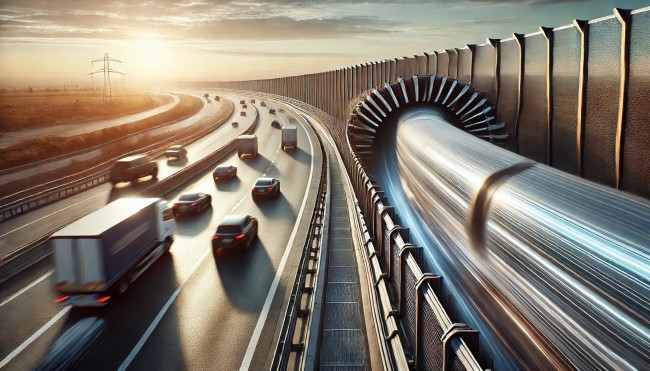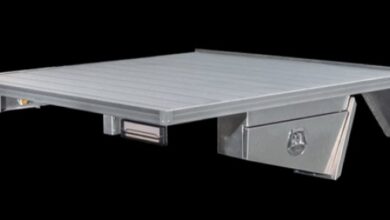Armco Barrier Supplies: Why Crash Barriers Are Essential for High-Speed Roadways

In the fast-paced world of high-speed roadways, safety is paramount. Ensuring the protection of drivers, passengers, and pedestrians requires robust infrastructure. For those looking to enhance roadway safety, visit Armco Barrier Supplies for reliable crash barrier solutions that meet the highest standards.
The Role of Crash Barriers in Road Safety
Crash barriers, also known as guardrails, are engineered to absorb and dissipate the kinetic energy of vehicles that veer off the road, preventing catastrophic accidents. The risk of severe accidents is heightened on high-speed roadways, where vehicles travel at significant speeds. Crash barriers serve as a critical line of defense, reducing the likelihood of vehicles crossing into oncoming traffic, colliding with roadside obstacles, or plummeting off the road altogether.
Types of Crash Barriers
There are several types of crash barriers, each designed to address specific safety challenges on the road. Understanding these types can help in selecting the most appropriate barrier for a particular roadway environment:
- Rigid Barriers: These are typically made of concrete and are used in areas where vehicle redirection is necessary. Rigid barriers are highly effective in containing vehicles but offer little flexibility, meaning they do not absorb much impact energy, which can sometimes lead to severe vehicle damage.
- Semi-Rigid Barriers: Made from steel beams, these barriers provide a balance between energy absorption and vehicle containment. They are designed to flex upon impact, reducing the force transmitted to the vehicle and its occupants. This type of barrier is often used on highways and other high-speed roads.
- Flexible Barriers: Constructed from materials like cable wire, flexible barriers are designed to absorb significant amounts of energy by bending and stretching upon impact. While they are less likely to cause severe damage to vehicles, they require more space to operate effectively, making them ideal for wide roadways.
The Importance of Strategic Placement
The effectiveness of crash barriers is heavily influenced by their placement. Strategic positioning of these barriers is crucial in preventing accidents and minimizing the severity of those that do occur. Key considerations include:
- Road Curvature: On sharp curves, the risk of vehicles losing control increases. Placing barriers at these locations helps prevent vehicles from leaving the roadway.
- Bridge Approaches: The areas leading up to and away from bridges are common sites for accidents. Crash barriers here can prevent vehicles from veering off the bridge.
- High-Speed Zones: Areas where speed limits are higher than average require robust barriers to manage the increased kinetic energy in potential crashes.
Innovations in Crash Barrier Technology
As technology advances, so too do crash barriers. Modern designs are increasingly focused on energy absorption and minimizing the impact on vehicle occupants. Some of the latest innovations include:
- Energy-Absorbing Terminals: These are designed to collapse in a controlled manner when hit, absorbing energy and reducing the severity of the crash.
- Smart Barriers: Equipped with sensors, these barriers can detect impacts and relay information to traffic management systems, allowing for quicker emergency response.
- Recycled Materials: In an effort to be more environmentally friendly, some crash barriers are now being made from recycled materials without compromising on strength or effectiveness.
Real-World Impact of Crash Barriers
Crash barriers have proven their worth in countless real-world scenarios. For example, studies have shown that roads equipped with crash barriers see a significant reduction in fatal accidents. On highways, the presence of barriers can mean the difference between a minor incident and a major tragedy.
In one documented case, a car travelling at high speed on a wet road lost control and struck a semi-rigid crash barrier. The barrier absorbed much of the impact, preventing the vehicle from crossing into oncoming traffic and potentially causing a multi-car pileup. The occupants of the vehicle, while shaken, survived with minor injuries—a testament to the barrier’s effectiveness.
The Future of Road Safety
As urbanisation and vehicle ownership continue to grow, the demand for safe roadways will only increase. Crash barriers will remain an integral part of this safety infrastructure, but ongoing research and development are essential. Future advancements may include barriers that can self-repair, further improvements in energy absorption, and even more intelligent systems that integrate with broader traffic management networks.
Conclusion
The importance of crash barriers on high-speed roadways cannot be overstated. They are a vital component in the fight to reduce road traffic fatalities and injuries. Whether it’s through innovative materials, strategic placement, or advanced technology, the role of crash barriers will continue to evolve, ensuring that our roads are safer for everyone.
For those in need of high-quality crash barriers, don’t hesitate to visit Armco Barrier Supplies. Their range of products is designed to meet the rigorous demands of modern road safety, providing peace of mind to drivers and passengers alike.



